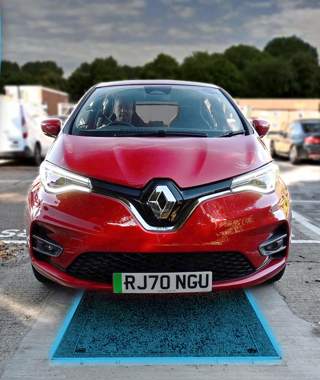Wireless charging of electric vehicles (EVs) at up to 500kW could be possible following the development of new technology in Sweden.
Researchers at Chalmers University of Technology have pushed inductive power transfer technology further to enable high-power battery charging that is ready to presented to the fleet industry.
The initial study focussed on using the technology for charging electric urban ferries but Yujing Liu, professor of Electric Power Engineering at the Department of Electrical Engineering at Chalmers said for the electric trucks of the future, there is a potential application.
The wireless charger uses a new type of silicon carbide semiconductor and a newly developed copper wire that is as thin as a human hair. These two factors make transmitting high power through air a realistic proposition.
Charging power of 150kW to 500kW are possible, with no physical connection between the vehicle and charger. This makes charging at a depot, for example, more straightforward and removes the need for heavy charging cable.
Liu said: “A key factor is that we now have access to high-power semiconductors based on silicon carbide, known as ‘SiC components’. As a power source for electronic products, these have only been on the market a few years. They allow us to use higher voltages, higher temperatures and much higher switching frequencies, compared to traditional silicon-based components.
“This is important because it’s the frequency of the magnetic field that limits how much power can be transferred between two coils of a given size.”
Liu emphasised that charging electric vehicles entails several conversion steps; between direct current and alternating current and between different voltage levels.
“So, when we say that we’ve achieved an efficiency of 98% from direct current in the charging station to the battery, that figure may not mean much if you don’t carefully define what’s measured.
“But you can also put it this way: losses occur whether you use ordinary cable-based conductive charging or charge by using induction. The efficiency we’ve now achieved means that the losses in inductive charging can be almost as low as with a conductive charging system. The difference is so small as to be practically negligible. It’s about one or two per cent,” Liu explained.




















Login to comment
Comments
No comments have been made yet.